
 |
Eager Space | Videos by Alpha | Videos by Date | All Video Text | Support | Community | About |
|---|

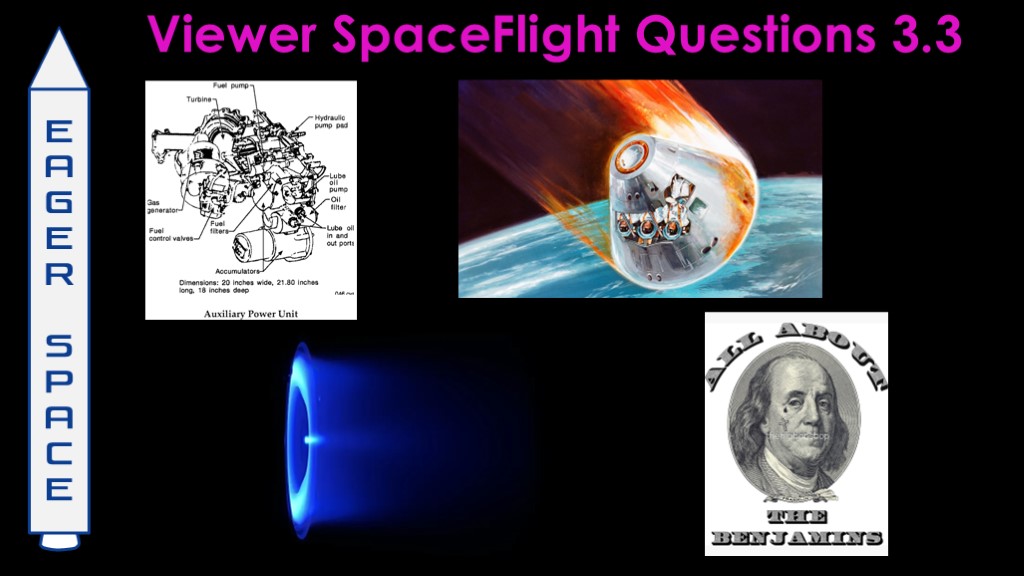

Thanks to everybody who asked questions.
Many of the answers are in videos that I've done in the past. You can find past videos by going to eagerspace.net and searching around.
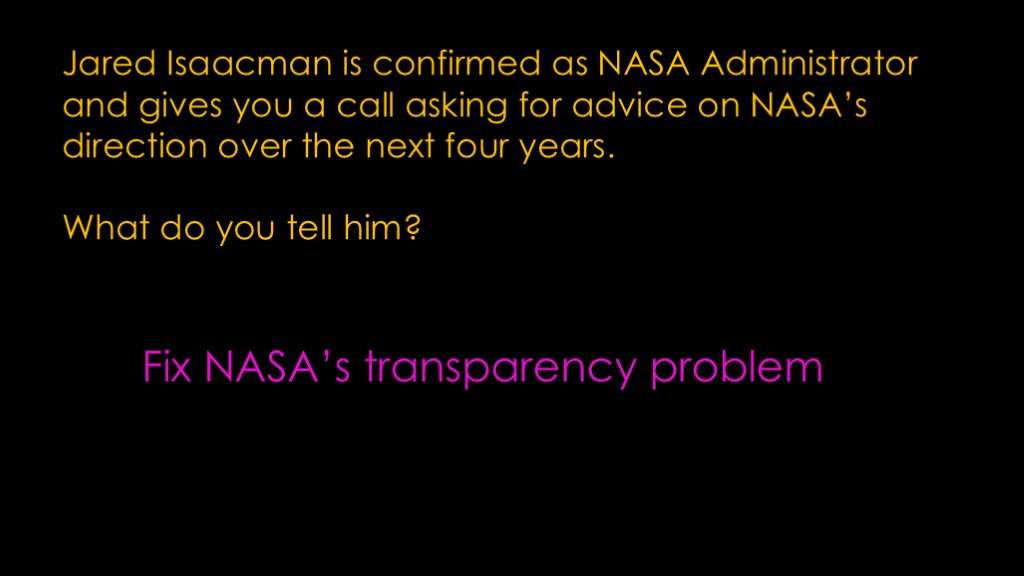
I responded to a post of his a while back on TwiX, and I had one bit of advice.
The advice was to fix NASA's transparency problem.
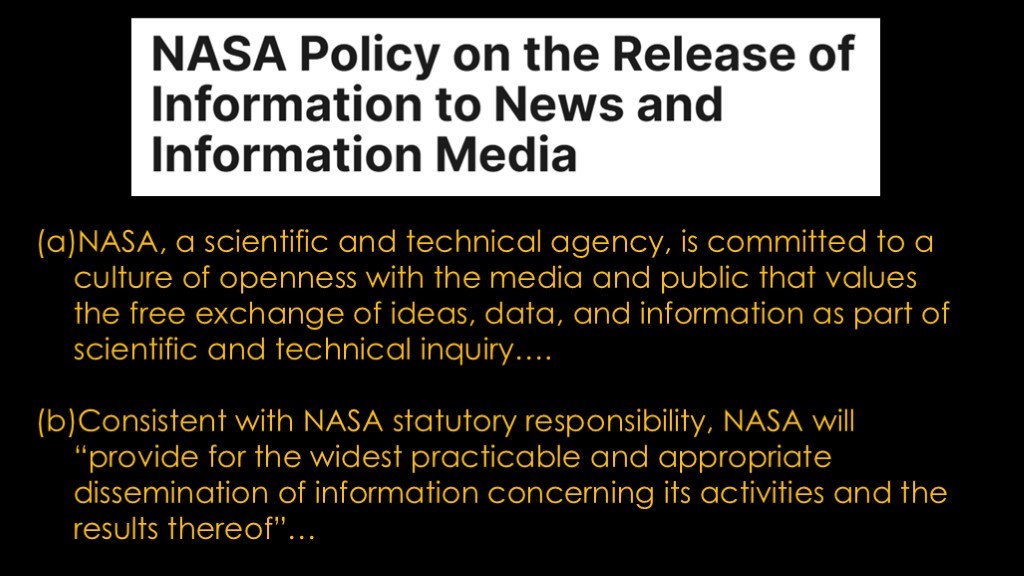
NASA's policy about the release of information starts with two requirements.
NASA is not adhering to either of them. Let's take one example.

NASA conspired to hide the unexpected orion heat shield erosion from the public and it only came out 16 months later in an IAG report. I use the word "conspired" deliberately; I have a copy of the post-flight briefing deck for Artemis 1 that I got through a FOIA request which is very frank about other issues but contains no details about Orion, and there is no video record of the meeting available.
This past December, we were notified that the expert team assigned to investigate the issue had determined the root cause but the investigation report was not released. I have an open FOIA request for that report.
This is an egregious example but in general NASA has stopped releasing contracts and many other details that previously would have been released.
NASA used to regularly release complete mission reports for shuttle flights. We've seen nothing like that from Artemis 1.
I also put in a freedom of information act request to NASA. I have generally gotten a timely response on my requests, but this time I was told that there were 174 requests in front of me. I don't know if that is a staffing issue or if it is now policy, but it compounds the problem.
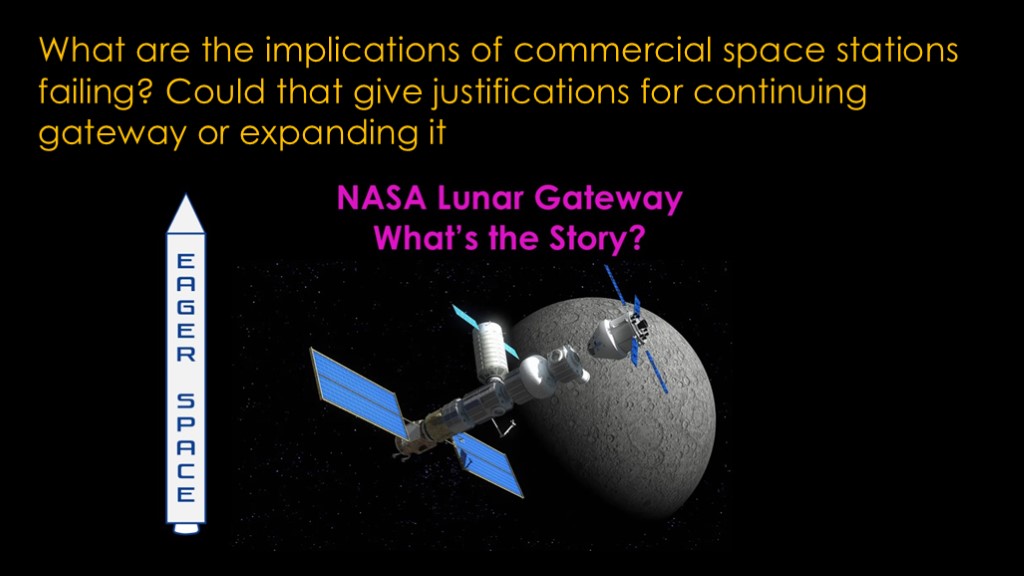
By "failing" do you mean "the program not working"?
I did a video on gateway, and the short story is that I don't think it makes any sense. The only way to get astronauts there is on Orion, and that's at least a $2 billion trip.
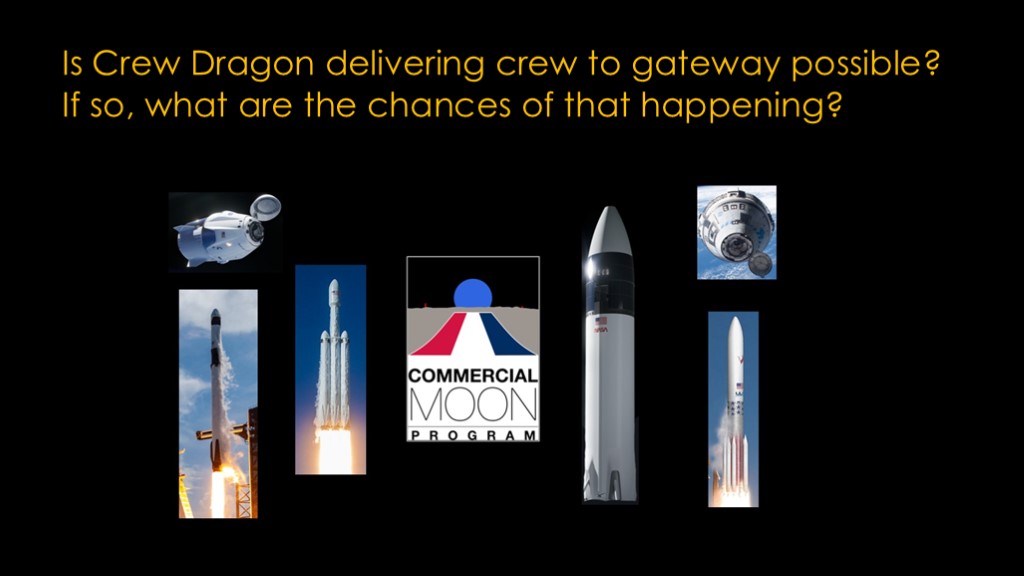
I talk about a few scenarios in the commercial moon video.
Falcon Heavy probably has enough oomph to get dragon to gateway. The problem is that crew dragon probably doesn't have the life support for 4 astronauts for that trip and the heat shield is rated for LEO reentry, not for the much higher speeds of reentry from the moon.
I don't think gateway makes any sense so I'm hoping that the gateway part won't happen.
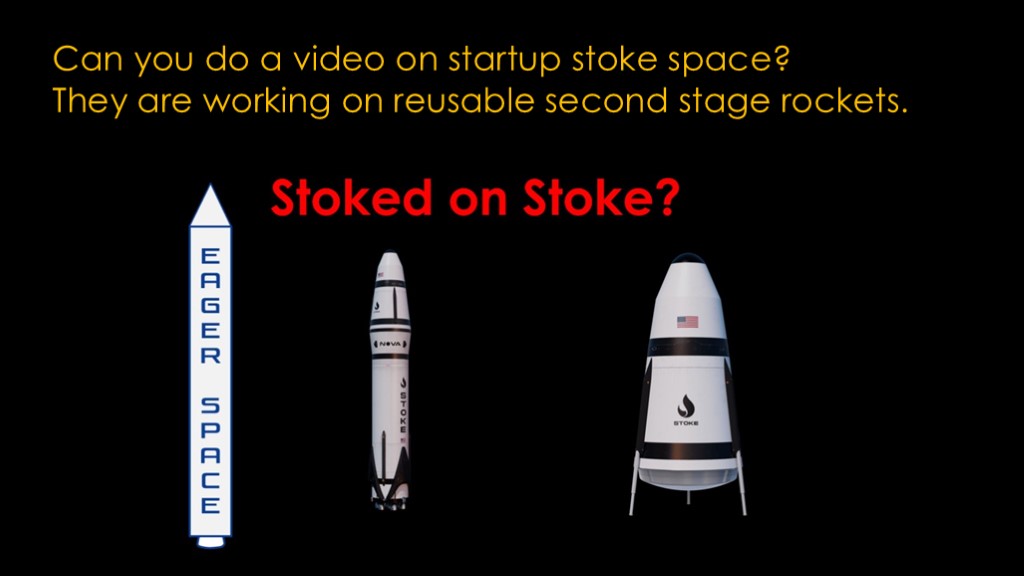
Sure...
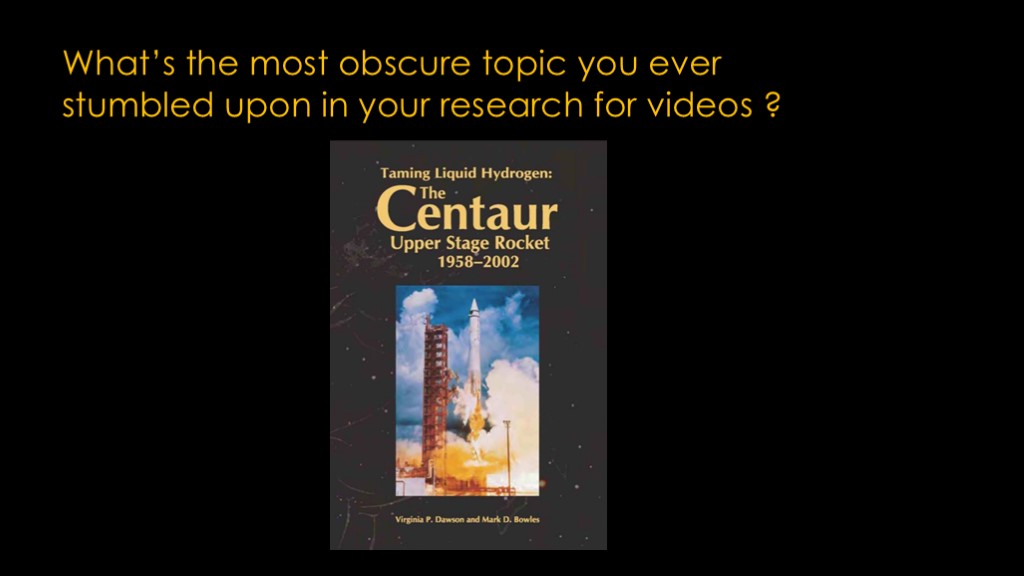
Not sure; I've read a lot of weird papers. Spend some time on the NASA technical reports server and you'll find a lot. Here's a good read that is somewhat obscure.

Very unlikely. I don't have a lot of passion there, I don't have good information sources, and it's hard to figure out what is real and what isn't real.
Maybe if they start flying reusable prototypes, maybe I'd talk about that.

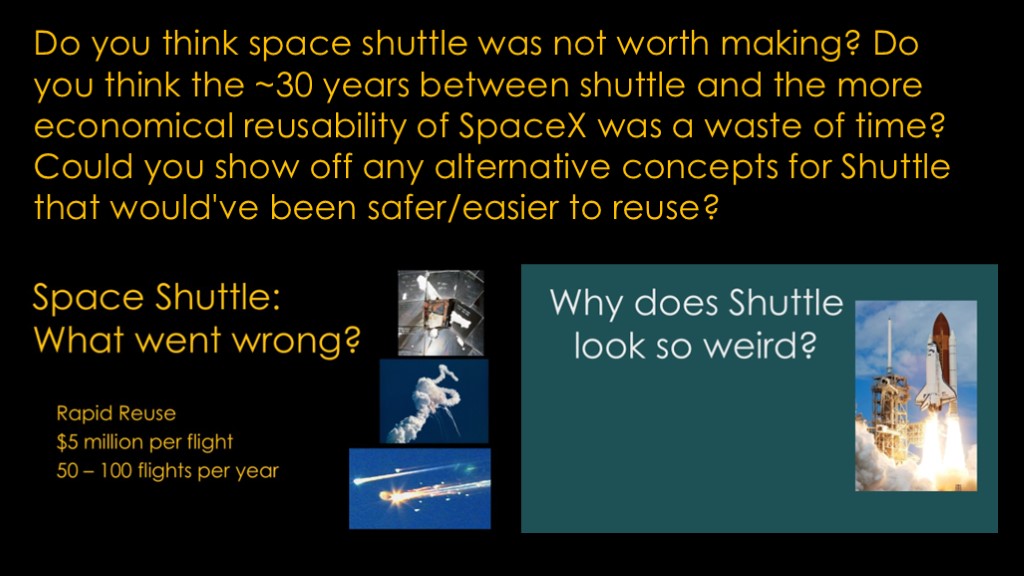
Here's a video for you...
Shuttle did what it was supposed to - it kept NASA in the rocket and astronaut business.
WRT alternatives, I talk about that in this video.
The short answer is that NASA got the absolute minimal shuttle because that is what Congress and President Nixon was willing to pay for.
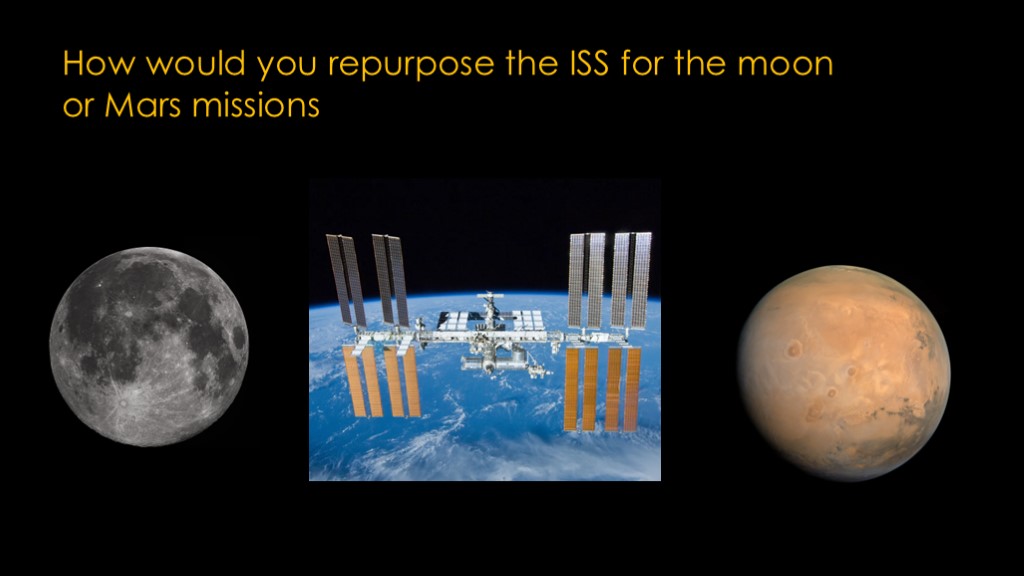
I don't see any direct way to do this.
I guess you could use it as a stopping-off-point, but the ISS is at 51 degrees of inclination so that the Russians could easily reach it, and launching to 51 degrees imposes a significant performance penalty if your launch site is Texas or Florida.

This sounds like a good homework assignment. I'm sure there are existing design guidelines for terrestrial hotels that you can apply to space.

I think this video covers it.
The short answer is that some of the increase in efficiency you get from being in space is lost during power transmission and launch costs kill you. Plus, you are fighting thousands of companies dedicated to making terrestrial solar cheaper.
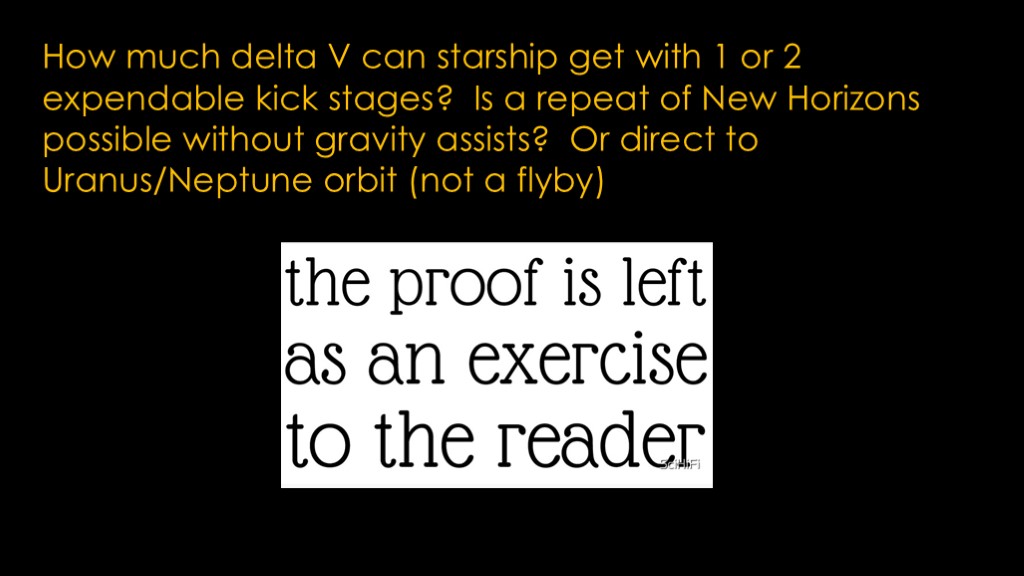
My guess is that you can find the delta v to do those sorts of missions, and calculating what you get from a kick stage is also straightforward. Try looking at the Impulse Aerospace stages.

I think it's pretty simple.

There are hundreds of different factors that determine what is the best choice. I talk about the process companies use in this video.
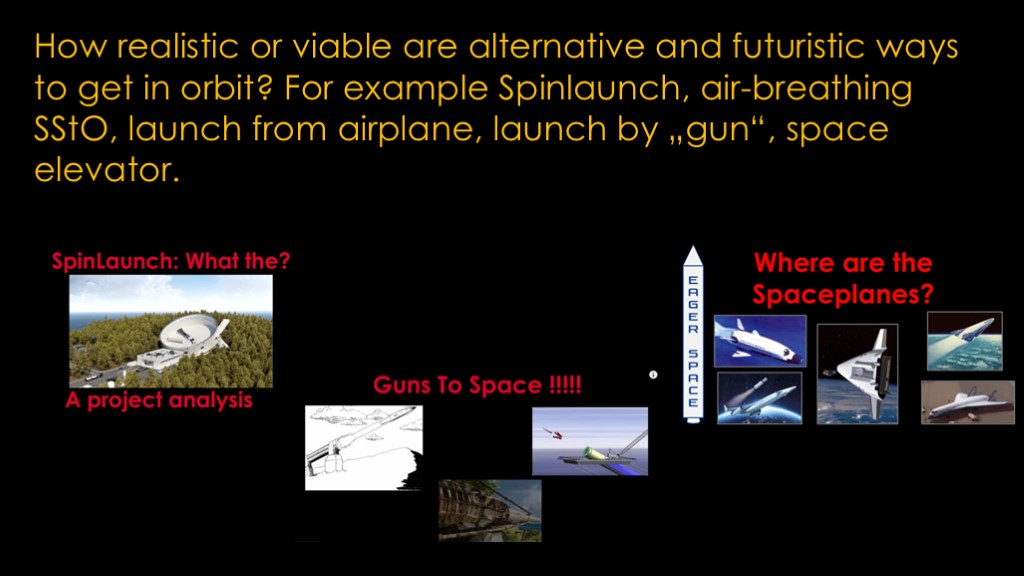
I've done multiple videos on these concepts.
None of them really make sense.
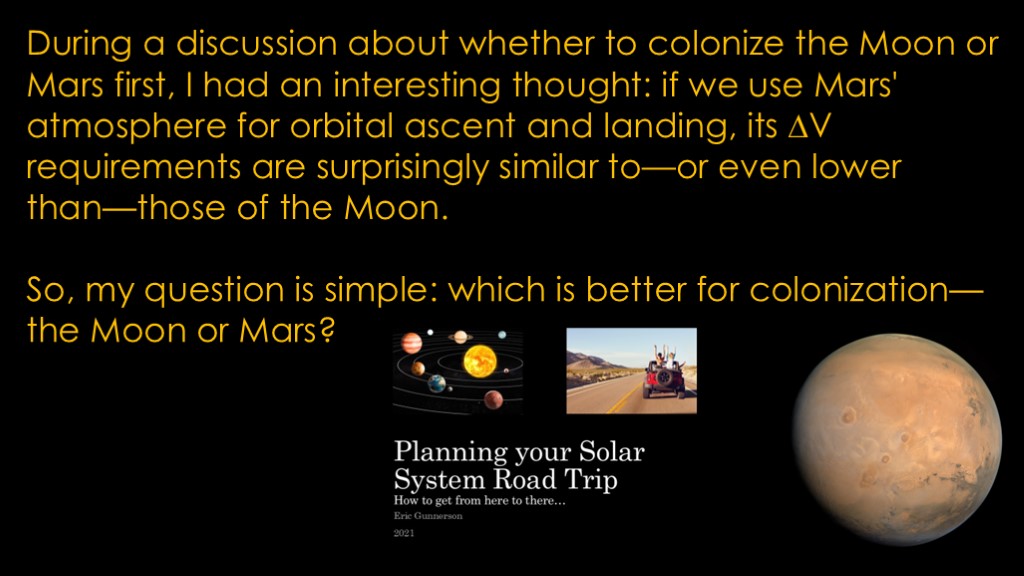
If you can aerobrake on Mars descent, the delta v to get material to Mars is considerably less than getting the same material to the surface of the moon. It's harder to get back from Mars, but in any colonization mission, the vast majority of the material will flow from the earth to the colony, not the other way around.
I think there are numbers in my planning your solar system road trip video.
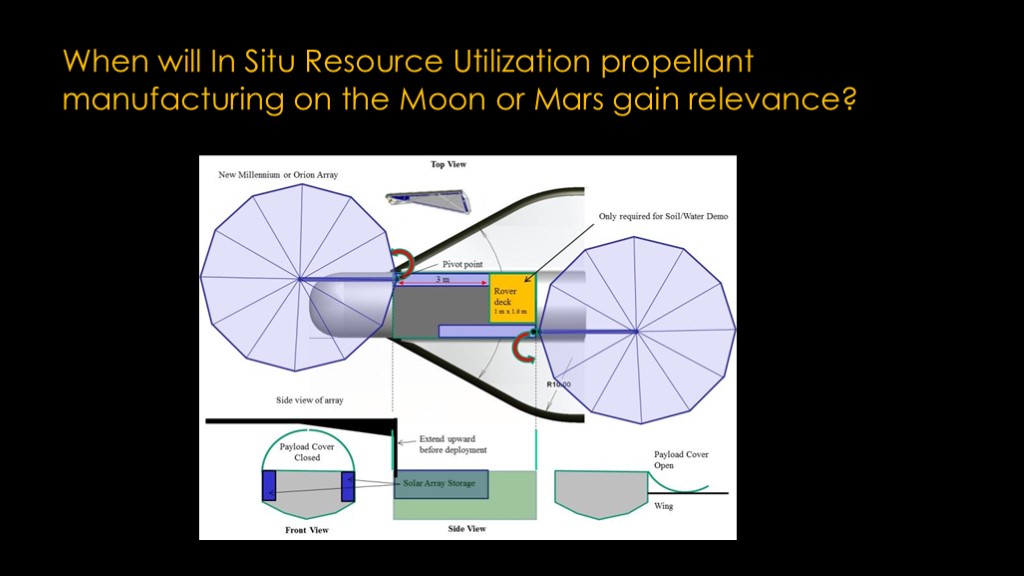
When you have enough local demand that it makes economic sense to invest in ISRU in general.
ISRU will require a *ton* of investment, and therefore you need a big market and a lot of demand for it to make sense. Otherwise, it will be a great way to lose a billion dollars.
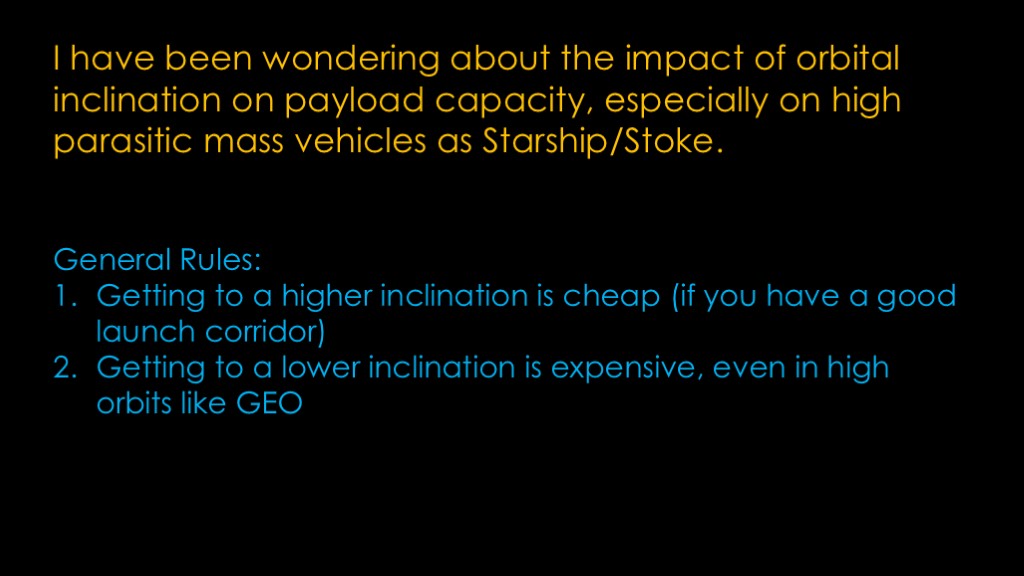
A few general rules:
Getting to a higher inclination is relatively cheap, assuming you can launch far enough to the north or the south.
Getting to a lower inclination is expensive, even if you are going to a high orbit like GEO.
Find yourself a good hohman transfer calculator to tell you the difference in delta v cost between orbits, and build yourself a model using the rocket equation and play around. Your answer will be wrong, but it might be close enough. KSP might also work for this.
Also note that the market is switching. A decade ago a lot of the money was launching to GTO, but LEO and Lunar has been taking over and the cost of getting to low inclination doesn't matter for those launches.
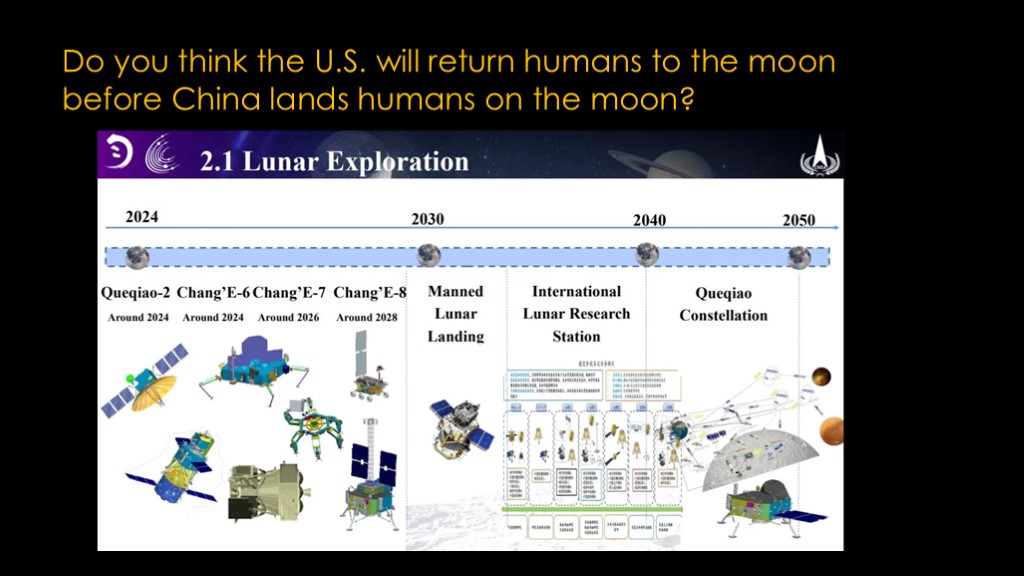
No.
The Chinese have a well-defined incremental plan and getting to the moon is a matter of national pride.
Artemis is a weird patched-together architecture that is likely to keep slipping and getting back to the moon is not a matter of national pride for the US.

It has to be Energia.
Buran was a pretty stupid idea - it's not clear to me how why Russia ever thought that a space shuttle was a good idea - but NPO Energia built an absolute killer super heavy launch vehicle with a bit less payload than the Saturn V.
They flew it *twice*, once with the Polyus military payload and once with the Buran shuttle. And that's it.
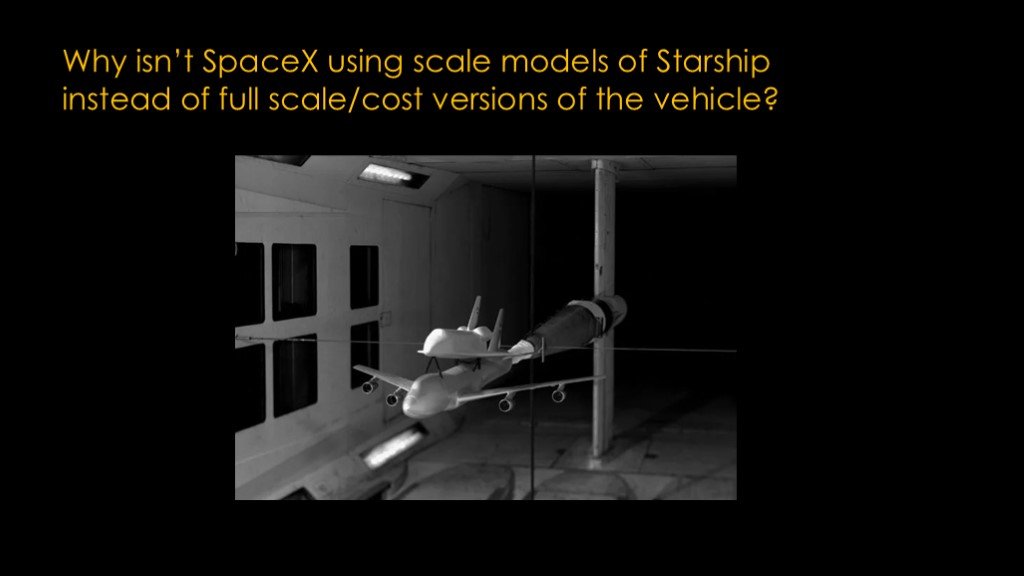
Scale models were often used in wind tunnel testing, but that has largely been replace with computational fluid dynamics.
For anything else, it's difficult. Mass varies with the cube of size, surfaces vary with the square of the scale. That messes up the ratios between lift and drag.
There's also the engine problem. If you want to test a scale model of super heavy and starship, what engines are you going to use?

Let's look at them in order.
I've whined about Asteroid Mining not being practical in the past. I think AstroForge has a good startup plan to explore if there is something possible in that area, but they're a long way from something commercial at this point.
Space Tourism is currently blocked by transportation costs. It's also pretty uncomfortable in orbit, and that's going to be a fundamental problem. I do think there may be a "cruise ship" approach rather than a "hotel" approach - I'll talk more about that in an upcoming video.
NASA has been searching for the killer orbital industry app for decades and hasn't really come up with anything under the current cost structure. That *might* change if starship drops the price to orbit significantly, but I'm still a bit skeptical.
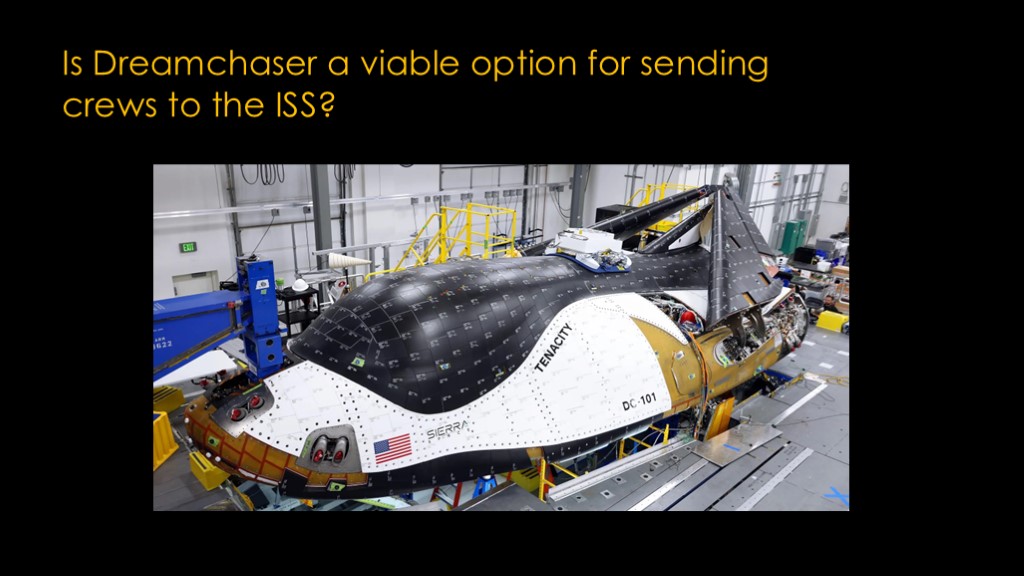
Currently, the only contract they have with NASA is for the cargo version.
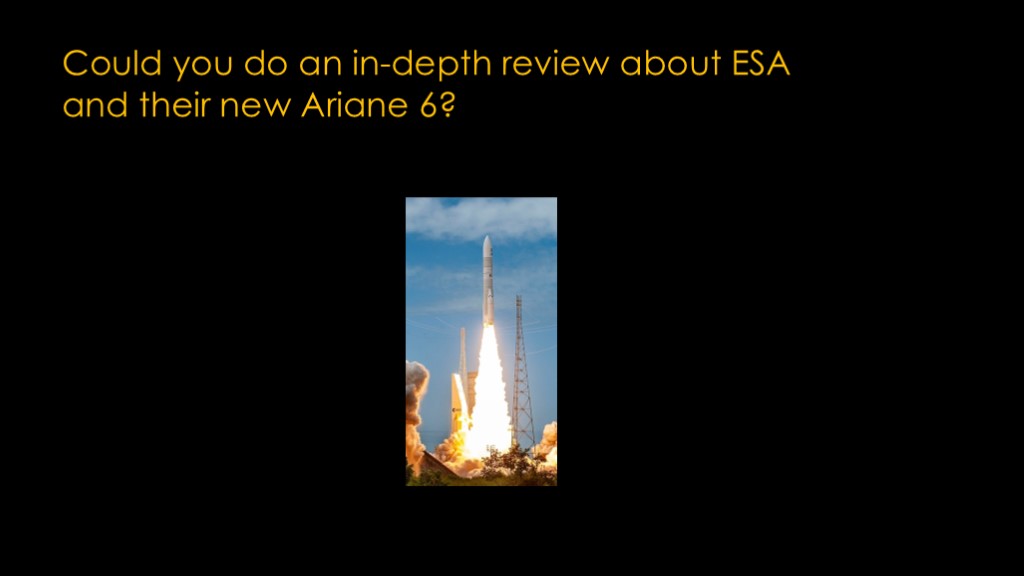
I haven't done anything on Ariane 6 because there's very little different from Ariane 5.
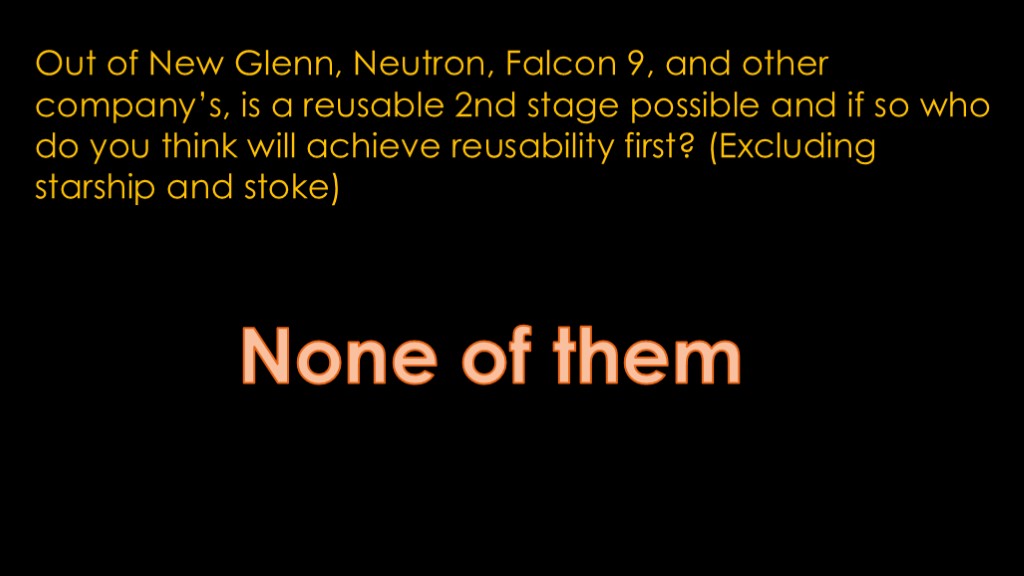
New Glenn is big enough that it could conceivably work but the word I've heard is that their Project Jarvis got cancelled a few years back. Neutron is probably too small to do this sort of thing, and there's no way SpaceX will try this on Falcon 9.
So I guess my answer is none of them.
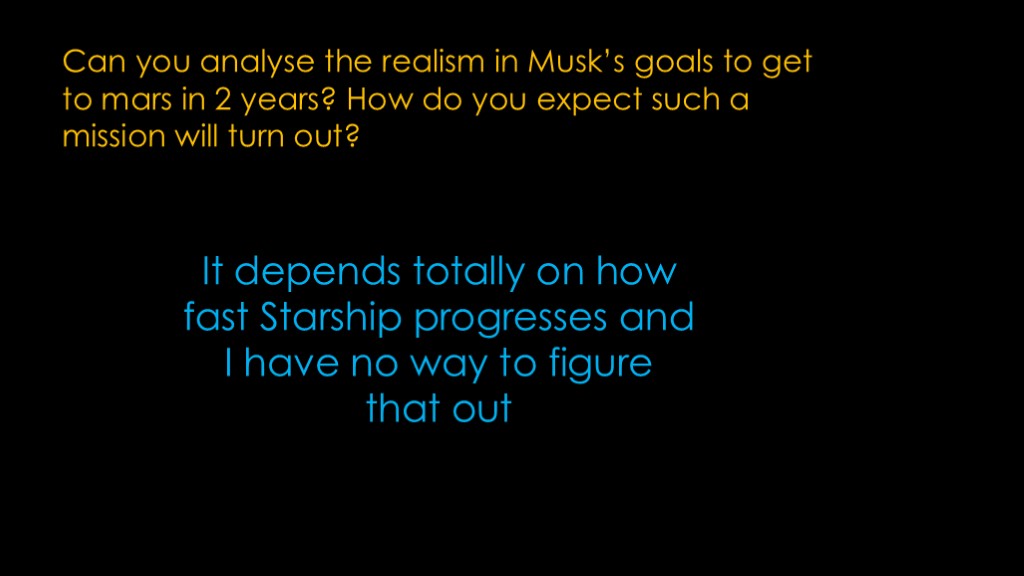
I can see scenarios where they can easily send a couple of starships, and scenarios where there is no way they can send starships.

Liquid oxygen is easy from gas, as is hydrogen. Methane is a bit harder but the synthesis is relatively cheap.

Hypergols are much harder to synthesize, require very special storage, and are toxic as hell if there are leaks.

If you enjoyed this video, listen to this...